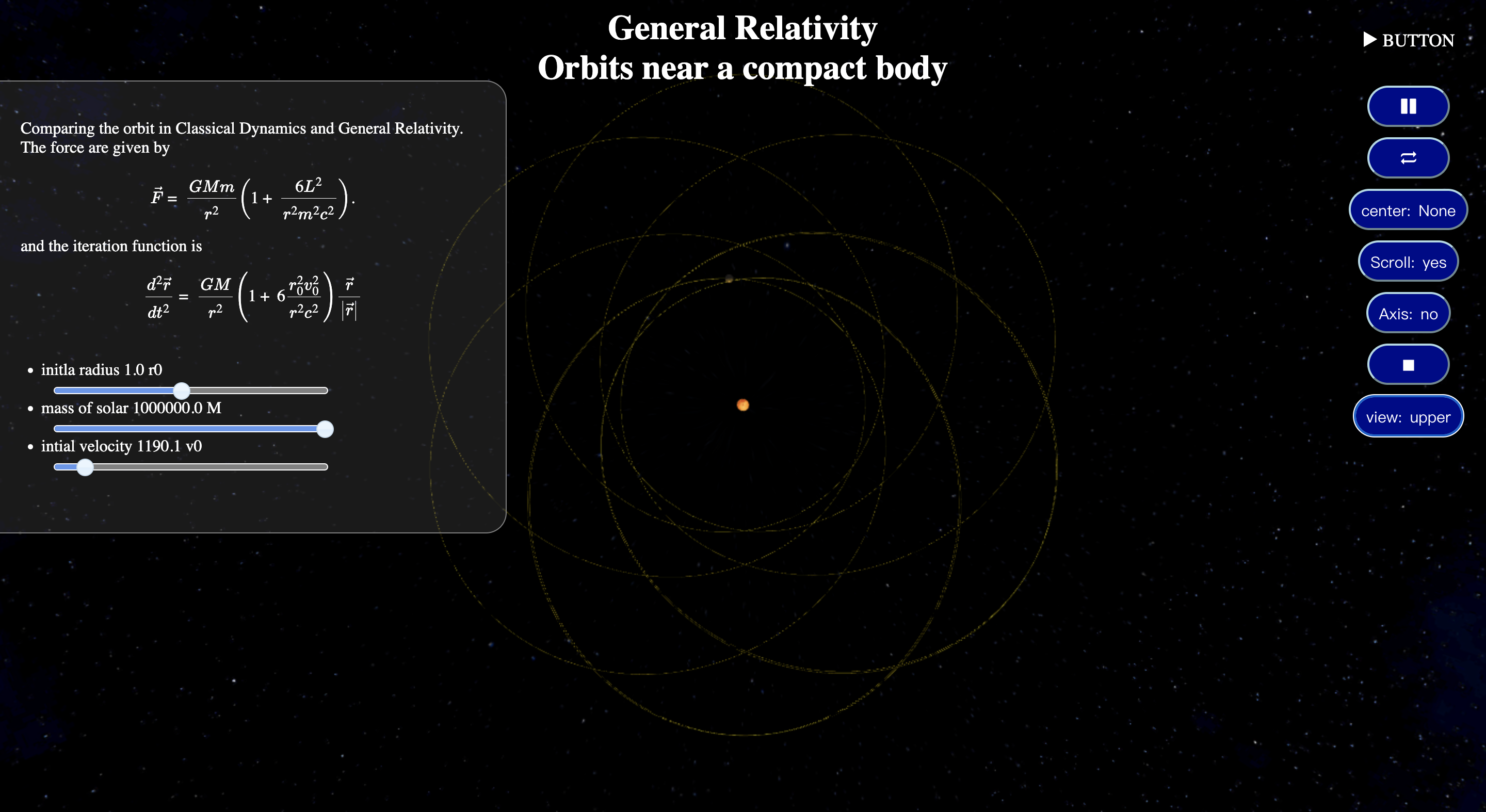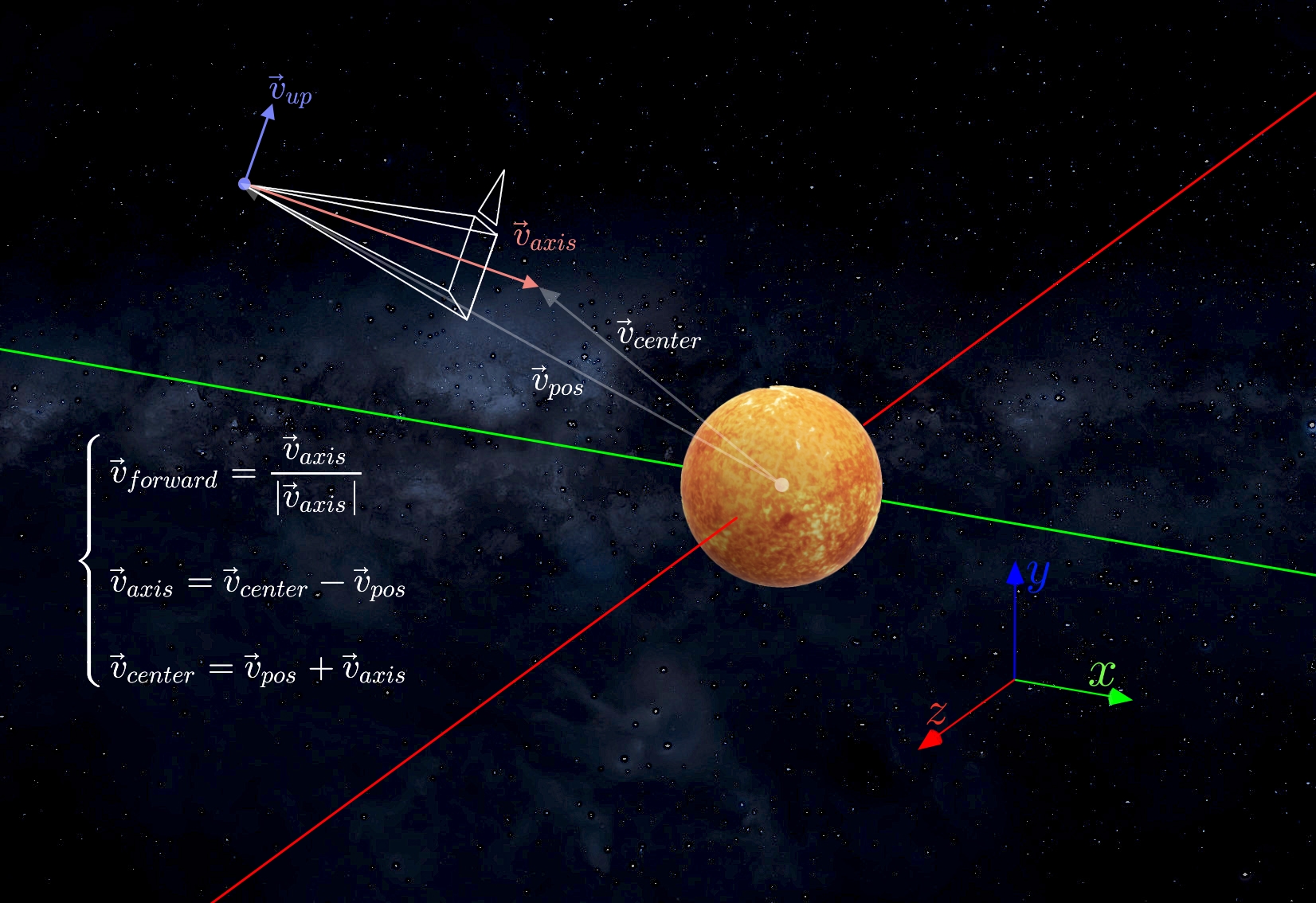game.github.io
Precession orbit in General Relativity
- author:楊長茂、蘇唯善、高唯恩
- report url: Canvas link
- date: 2023/1/3
Analytic Derivation
The exact form of the equation motion near a spheical symmetry black hole with no charge and angular momentum is derived in our Project paper
~/GRorbit/Simulation_of_the_Orbit_near_Compact_star.pdf
The classical dynamics (C.D.) and general relativity (G.R.) provided that the effective force are
pluggin the intial value $r_0$ and $v_0$, we have the ODE
Python code
npyMain.pyis the python code importing packagevpythonandnumpyvpyMain.pyis the python code importing only packagevpython
If you don’t already have packages vpython, you need to go to Windows PowerShell or Mac Terminal. Then type
pip install vpython
or
pip3 install vpython
You may
- excute the python code directly.
cd ~/GRorbitthenpython3 npyMain.pyorpython3 vpyMain.py
python: https://www.python.org vpython: https://www.glowscript.org/docs/VPythonDocs/index.html
Interface

graph place
- The orange sphere represent the solar in this system.
- The sphere with trail represent the planet in this system.
- background
- If your computer system is Mac OS, the blackground would be Milky Way.
- If your computer system is Windows, the blackground would be black.
Buttons
We have many buttons to control the scene
- pause/run icon: is to run the iteration.
- cycle icon: is to initalize all the iteration and trail.
- center:
- None: You may control the camera as in the spaceship.
- Solar: The center of view will lock on solar.
- Planet: The center of view will lock on planet.
- Scroll: is to toogle the scroll option of user.
- Axis: is to toogle showing the axis arow.
- Stop icon: is to stop the entire iteration, but still may rotate the scene.
- view: is to move camera to upper of system, same plane of system or none to control.
Slider
The sliders are use to control the intial value, so it would stop updating to reset the intial radius, velocity or mass. ###
Scene coordinate
The scene coordinate are also given in vpython API
